Vatican City may have fewer than 1,000 citizens and span only 110 acres, but it also has a multimillion-dollar budget and an unbelievably complex history. Understanding how it all works requires parsing through centuries of religious texts. Is the Vatican confusing and mysterious? Is the Pope Catholic? Here’s a look behind the scenes.
1. Regular Exorcise!
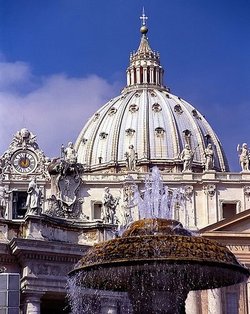
Baudelaire once said that “the greatest trick the devil ever pulled was convincing the world he doesn’t exist.” But in modern-day Vatican City, the devil is considered alive and well. The former Pope John Paul II personally performed three exorcisms during his reign, and the current Pope Benedict XVI is expanding the ranks of Catholic-sponsored exorcists throughout the world. In fact, Father Gabriele Amorth, the Church’s chief exorcist, claims to expel more than 300 demons a year from the confines of his Vatican office, and there are more than 350 exorcists operating on behalf of the Catholic Church in Italy alone. Amorth also teaches bishops how to tell the difference between satanic possession and psychiatric illness, noting that those who suffer from the former seem to be particularly repulsed by the sight of holy water and the cross.
2. Where Thieves Go to Prey

With 1.5 crimes per citizen, Vatican City has the highest crime rate in the world. It’s not that the cardinals are donning masks and repeatedly robbing the bank, it’s just that the massive crowds of tourists make Vatican City a pickpocket’s paradise. The situation is complicated by the fact that the Vatican has no working prison and only one judge. So most criminals are simply marched across the border into Italy, as part of a pact between the two countries. (The Vatican’s legal code is based on Italy’s, with some modifications regarding abortion and divorce.) Crimes that the Vatican sees fit to try itself—mainly shoplifting in its duty-free stores—are usually punished by temporarily revoking the troublemaker’s access to those areas. But not every crime involves theft. In 2007, the Vatican issued its first drug conviction after an employee was found with a few ounces of cocaine in his desk.
3. The Worst Confessions

Some sins are simply too much for a local bishop to forgive. While priests can absolve a sin as serious as murder (according to the Church), there are five specific sins that require absolution from the Apostolic Penitentiary. This secretive tribunal has met off and on for the past 830 years, but in January of 2009, for the first time ever, its members held a press conference to discuss their work.
Three of the five sins they contemplate can only be committed by the clergy. If you’re a priest who breaks the seal of confession, a priest who offers confession to his own sexual partners, or a man who has directly participated in an abortion and wants to become a priest, then your case must go before the tribunal to receive absolution. The other two sins can be committed by anyone. The first, desecrating the Eucharist, is particularly bad because Catholics believe that the bread and wine transubstantiate into the body and blood of Christ. Messing with them is like messing with Jesus. And then, there’s the sin of attempting to assassinate the Pope. That one’s pretty self-explanatory.
The meetings of the Apostolic Penitentiary are kept confidential because they’re a different form of confession. The sinner is referred to by a pseudonym, and only the Major Penitentiary, Cardinal James Francis Stafford, decides how the sin shall be dealt with. Presumably, a bunch of Hail Marys doesn’t cut it.
4. Read the Pope’s Mail
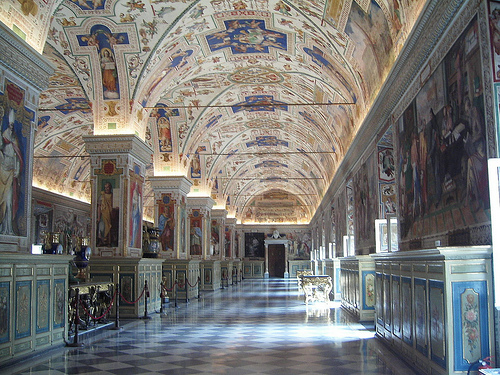
The Vatican Library
The Vatican’s secret archives haven’t been truly secret since Pope Leo XIII first allowed scholars to visit in 1881. Today, it’s even more accessible. Outsiders are free to examine the correspondences of every pope for the past 1,000 years, although there is one catch: Guests have to know exactly what they’re looking for. With 52 miles of shelves in the archives, the librarians prohibit browsing.
The most famous letter there is probably Henry VIII’s request that his marriage to Catherine of Aragon be annulled, which Pope Clement VII denied. Henry divorced Catherine anyway and married Anne Boleyn (and four other women), leading to Rome’s break with the Church of England. The archives also contain an abundance of red ribbons, which were used to bind 85 petitions from English clergyman and aristocrats.
5. The Pope Likes to Text Message
Pope Benedict XVI routinely sends text messages of his homilies to mobile subscribers around the world, and in 2009, the Vatican opened up an official YouTube channel to show various Papal addresses and ceremonies. The Vatican even released an iPhone application that contains multilingual versions of the Breviary prayer book and the prayers of daily mass. But the Pope’s enthusiasm for technology isn’t limited to cell phones and the Internet. The Vatican has also added solar panels to the roof of the Pope Paul VI auditorium as part of its commitment to fight climate change.
6. They Have the Finest Swiss Bodyguards
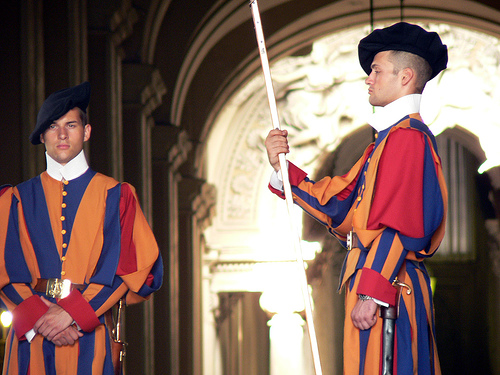
Nowadays, the Swiss have a reputation for pacifism, but back in the 1500s, they were considered an unstoppable military force. Swiss armies were renowned for the their mastery of a weapon called the halberd, a deadly combination of a spear and an axe, and their ground troops were famous for routinely demolishing legions of enemies on horseback. After Pope Julius II witnessed their ferocity in battle 500 years ago, he recruited a few soldiers to become his personal bodyguards. Ever since, Swiss Guards have pledged fidelity to the Pope, sometimes dying for the cause. During the sacking of Rome in 1527, for instance, three quarters of them were killed while providing cover for Pope Clement VII to escape.
Today, the hundred or so members of the Swiss Guard spend most of their time bedecked in Renaissance garb, twirling their halberds in ceremonies or manning checkpoints around the Vatican. When the Guards are actually protecting the Pope, they wear plain clothes and carry distinctly modern weapons.
7. The Mafia Dipped into the Collection Plate
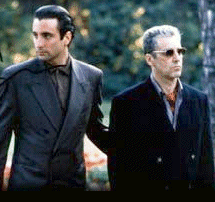
In The Godfather: Part III, a shady deal between the mafia and the Vatican leads to the murder of the Pope. Was this based on a true story? Possibly. On the morning of September 29, 1978, Pope John Paul I was found dead, sitting up in his bed, after only 33 days in office. Although Vatican officials claimed the 65-year-old pope died of a heart attack, there was never an autopsy, and at the time, the Vatican definitely had ties to organized crime. Sure enough, in 1982, Vatican Bank president Father Paul Marcinkus resigned from his post after a series of scandals exposed the bank’s ties to the mafia. Eventually, the bank had to repay more than $200 million to its creditors. But Marcinkus was never indicted of a crime. And though he was suspected of being involved in several mysterious deaths, including Pope John Paul I’s, Marcinkus successfully claimed diplomatic immunity in the United States and retired to Arizona in 1990.
8. There’s No Vice-Pope
Once a cardinal becomes the Pope, he’s the designated leader of the Catholic Church and God’s representative on Earth for the rest of his life. As with Supreme Court justices, he can resign before his death, but that’s unlikely. (It’s been more than 500 years since the last papal resignation.) Further, as modern medicine improves, even seriously ill people tend to stick around longer, meaning that a Pope could be alive but unable to perform his duties for years, as was the case with John Paul II. What happens then? Well, no one is really sure. A cardinal can take over the Pope’s responsibilities as the Vatican’s head of state, but no one else is allowed to carry out his ceremonial duties. In the end, many masses and benedictions simply go unperformed until the Pope either passes away or recovers.
9. Faith-Based Economics
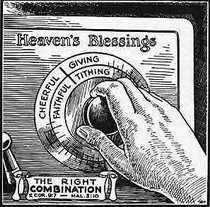
The Vatican needs several hundred million dollars per year to operate. Its many financial responsibilities include running international embassies, paying for the Pope’s travels around the world, maintaining ancient cathedrals, and donating considerable resources to schools, churches, and health care centers. So where does that money come from? Catholics pay tithes to their local parishes and donate about $100 million every year to the Vatican itself. But collection plates aren’t the Vatican’s only source of money. The city-state also gets cash from books, museums, stamps, and souvenir shops. (Get your limited-edition Vatican euros here!)
But that’s not always enough. By the end of 2007, the city-state was $13.5 million in the hole. Part of the problem was the weakened American dollar, which translated into less purchasing power. Another contributing factor was the lackluster performance of the Vatican’s newspaper, L’Osservatore Romano. To boost subscriptions, the Pope has asked the editor to spice up the layout with more photos and allowed him to cover world news stories in addition to the traditional religious fare.
10. Even the ATMs Are in Latin

The Vatican Bank is the only bank in the world that allows ATM users to select Latin to perform transactions. That’s just one symbol of the Holy See’s continued devotion to the language. Pope Benedict XVI has been particularly passionate about reviving the language and purportedly holds many informal conversations in Latin. (Pope John Paul II generally spoke Polish.)
The Vatican’s Latin Foundation tries to keep the language relevant by translating modern phrases into the ancient tongue. In 2003, they released an updated dictionary that included the terms “rush hour” (tempus maximae frequentiae) and “dishwasher” (escariorum lavatory). Interestingly, the translations can have serious consequences. A recent U.S. lawsuit was brought against the Vatican for conspiring to protect a child-molesting priest, and it was held up for months as the Church’s experts rejected the prosecuting team’s Latin translations of terms such as “conspiracy to commit fraud.”
Source
READ MORE»
1. Regular Exorcise!

Baudelaire once said that “the greatest trick the devil ever pulled was convincing the world he doesn’t exist.” But in modern-day Vatican City, the devil is considered alive and well. The former Pope John Paul II personally performed three exorcisms during his reign, and the current Pope Benedict XVI is expanding the ranks of Catholic-sponsored exorcists throughout the world. In fact, Father Gabriele Amorth, the Church’s chief exorcist, claims to expel more than 300 demons a year from the confines of his Vatican office, and there are more than 350 exorcists operating on behalf of the Catholic Church in Italy alone. Amorth also teaches bishops how to tell the difference between satanic possession and psychiatric illness, noting that those who suffer from the former seem to be particularly repulsed by the sight of holy water and the cross.
2. Where Thieves Go to Prey

With 1.5 crimes per citizen, Vatican City has the highest crime rate in the world. It’s not that the cardinals are donning masks and repeatedly robbing the bank, it’s just that the massive crowds of tourists make Vatican City a pickpocket’s paradise. The situation is complicated by the fact that the Vatican has no working prison and only one judge. So most criminals are simply marched across the border into Italy, as part of a pact between the two countries. (The Vatican’s legal code is based on Italy’s, with some modifications regarding abortion and divorce.) Crimes that the Vatican sees fit to try itself—mainly shoplifting in its duty-free stores—are usually punished by temporarily revoking the troublemaker’s access to those areas. But not every crime involves theft. In 2007, the Vatican issued its first drug conviction after an employee was found with a few ounces of cocaine in his desk.
3. The Worst Confessions

Some sins are simply too much for a local bishop to forgive. While priests can absolve a sin as serious as murder (according to the Church), there are five specific sins that require absolution from the Apostolic Penitentiary. This secretive tribunal has met off and on for the past 830 years, but in January of 2009, for the first time ever, its members held a press conference to discuss their work.
Three of the five sins they contemplate can only be committed by the clergy. If you’re a priest who breaks the seal of confession, a priest who offers confession to his own sexual partners, or a man who has directly participated in an abortion and wants to become a priest, then your case must go before the tribunal to receive absolution. The other two sins can be committed by anyone. The first, desecrating the Eucharist, is particularly bad because Catholics believe that the bread and wine transubstantiate into the body and blood of Christ. Messing with them is like messing with Jesus. And then, there’s the sin of attempting to assassinate the Pope. That one’s pretty self-explanatory.
The meetings of the Apostolic Penitentiary are kept confidential because they’re a different form of confession. The sinner is referred to by a pseudonym, and only the Major Penitentiary, Cardinal James Francis Stafford, decides how the sin shall be dealt with. Presumably, a bunch of Hail Marys doesn’t cut it.
4. Read the Pope’s Mail

The Vatican Library
The Vatican’s secret archives haven’t been truly secret since Pope Leo XIII first allowed scholars to visit in 1881. Today, it’s even more accessible. Outsiders are free to examine the correspondences of every pope for the past 1,000 years, although there is one catch: Guests have to know exactly what they’re looking for. With 52 miles of shelves in the archives, the librarians prohibit browsing.
The most famous letter there is probably Henry VIII’s request that his marriage to Catherine of Aragon be annulled, which Pope Clement VII denied. Henry divorced Catherine anyway and married Anne Boleyn (and four other women), leading to Rome’s break with the Church of England. The archives also contain an abundance of red ribbons, which were used to bind 85 petitions from English clergyman and aristocrats.
5. The Pope Likes to Text Message
Pope Benedict XVI routinely sends text messages of his homilies to mobile subscribers around the world, and in 2009, the Vatican opened up an official YouTube channel to show various Papal addresses and ceremonies. The Vatican even released an iPhone application that contains multilingual versions of the Breviary prayer book and the prayers of daily mass. But the Pope’s enthusiasm for technology isn’t limited to cell phones and the Internet. The Vatican has also added solar panels to the roof of the Pope Paul VI auditorium as part of its commitment to fight climate change.
6. They Have the Finest Swiss Bodyguards

Nowadays, the Swiss have a reputation for pacifism, but back in the 1500s, they were considered an unstoppable military force. Swiss armies were renowned for the their mastery of a weapon called the halberd, a deadly combination of a spear and an axe, and their ground troops were famous for routinely demolishing legions of enemies on horseback. After Pope Julius II witnessed their ferocity in battle 500 years ago, he recruited a few soldiers to become his personal bodyguards. Ever since, Swiss Guards have pledged fidelity to the Pope, sometimes dying for the cause. During the sacking of Rome in 1527, for instance, three quarters of them were killed while providing cover for Pope Clement VII to escape.
Today, the hundred or so members of the Swiss Guard spend most of their time bedecked in Renaissance garb, twirling their halberds in ceremonies or manning checkpoints around the Vatican. When the Guards are actually protecting the Pope, they wear plain clothes and carry distinctly modern weapons.
7. The Mafia Dipped into the Collection Plate

In The Godfather: Part III, a shady deal between the mafia and the Vatican leads to the murder of the Pope. Was this based on a true story? Possibly. On the morning of September 29, 1978, Pope John Paul I was found dead, sitting up in his bed, after only 33 days in office. Although Vatican officials claimed the 65-year-old pope died of a heart attack, there was never an autopsy, and at the time, the Vatican definitely had ties to organized crime. Sure enough, in 1982, Vatican Bank president Father Paul Marcinkus resigned from his post after a series of scandals exposed the bank’s ties to the mafia. Eventually, the bank had to repay more than $200 million to its creditors. But Marcinkus was never indicted of a crime. And though he was suspected of being involved in several mysterious deaths, including Pope John Paul I’s, Marcinkus successfully claimed diplomatic immunity in the United States and retired to Arizona in 1990.
8. There’s No Vice-Pope
Once a cardinal becomes the Pope, he’s the designated leader of the Catholic Church and God’s representative on Earth for the rest of his life. As with Supreme Court justices, he can resign before his death, but that’s unlikely. (It’s been more than 500 years since the last papal resignation.) Further, as modern medicine improves, even seriously ill people tend to stick around longer, meaning that a Pope could be alive but unable to perform his duties for years, as was the case with John Paul II. What happens then? Well, no one is really sure. A cardinal can take over the Pope’s responsibilities as the Vatican’s head of state, but no one else is allowed to carry out his ceremonial duties. In the end, many masses and benedictions simply go unperformed until the Pope either passes away or recovers.
9. Faith-Based Economics

The Vatican needs several hundred million dollars per year to operate. Its many financial responsibilities include running international embassies, paying for the Pope’s travels around the world, maintaining ancient cathedrals, and donating considerable resources to schools, churches, and health care centers. So where does that money come from? Catholics pay tithes to their local parishes and donate about $100 million every year to the Vatican itself. But collection plates aren’t the Vatican’s only source of money. The city-state also gets cash from books, museums, stamps, and souvenir shops. (Get your limited-edition Vatican euros here!)
But that’s not always enough. By the end of 2007, the city-state was $13.5 million in the hole. Part of the problem was the weakened American dollar, which translated into less purchasing power. Another contributing factor was the lackluster performance of the Vatican’s newspaper, L’Osservatore Romano. To boost subscriptions, the Pope has asked the editor to spice up the layout with more photos and allowed him to cover world news stories in addition to the traditional religious fare.
10. Even the ATMs Are in Latin

The Vatican Bank is the only bank in the world that allows ATM users to select Latin to perform transactions. That’s just one symbol of the Holy See’s continued devotion to the language. Pope Benedict XVI has been particularly passionate about reviving the language and purportedly holds many informal conversations in Latin. (Pope John Paul II generally spoke Polish.)
The Vatican’s Latin Foundation tries to keep the language relevant by translating modern phrases into the ancient tongue. In 2003, they released an updated dictionary that included the terms “rush hour” (tempus maximae frequentiae) and “dishwasher” (escariorum lavatory). Interestingly, the translations can have serious consequences. A recent U.S. lawsuit was brought against the Vatican for conspiring to protect a child-molesting priest, and it was held up for months as the Church’s experts rejected the prosecuting team’s Latin translations of terms such as “conspiracy to commit fraud.”
Source














































